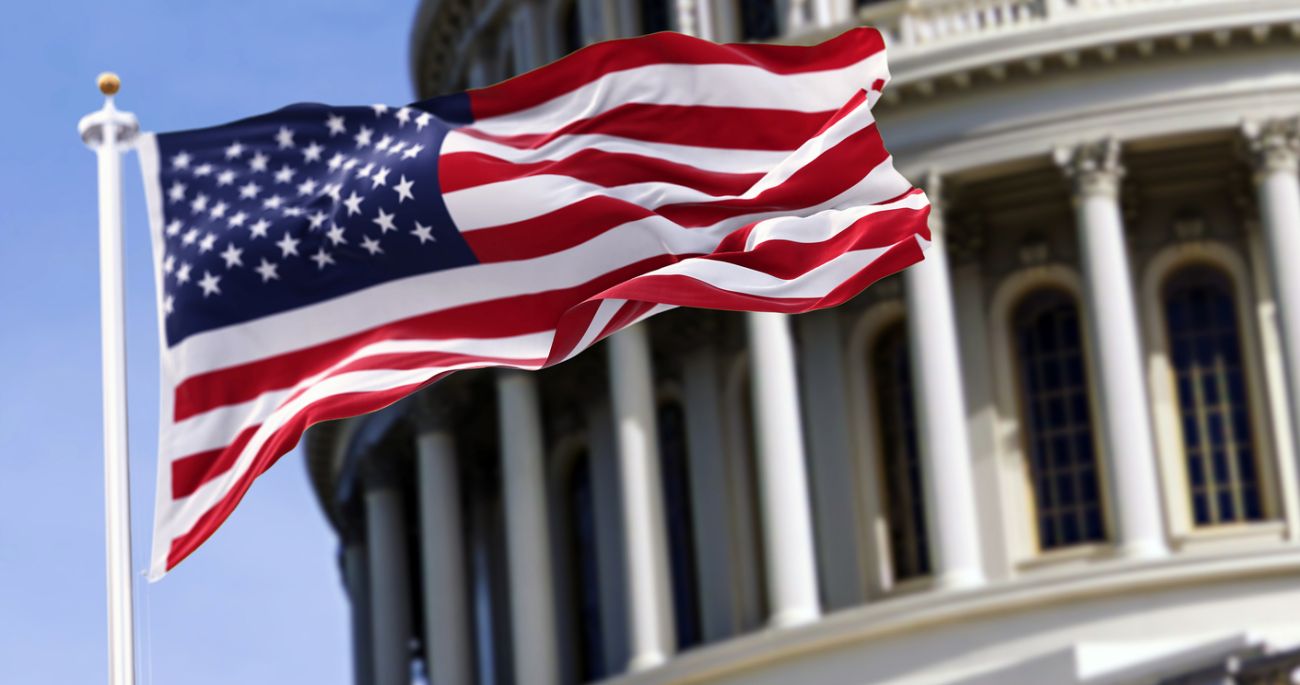What is Project 2025? And what would it mean for Michigan?

- Project 2025 is a collection of policies conservative interest groups want implemented or overturned if a Republican wins the presidency in 2024
- The effort calls for limiting access to abortion pills, using the military to detain undocumented immigrants and cutting funding for Medicaid
- Democrats say the plan would ‘destroy America’ if implemented as some Republicans, including Donald Trump, distance themselves from it
LANSING — As Democrats fret over Joe Biden’s poor debate performance, the president and his allies are turning attention to what they call a more pressing threat to the country: Project 2025.
Led by the Heritage Foundation, a Washington-based conservative think tank, Project 2025 provides a policy blueprint to reshape the federal government in the event a Republican wins this year’s presidential election.
With former President Donald Trump leading national polls as the presumptive GOP nominee, the country is in the midst of a “second American Revolution,” Heritage Foundation President Kevin Roberts said last week, “which will remain bloodless if the left allows it to be.”
Project 2025 includes a 922-page policy agenda calling for sweeping overhauls of various federal programs and agencies. It has spawned criticism from Democrats and attempts by some Republicans — including Trump — to distance themselves from the effort altogether.
The policy proposals could have significant effects on Michigan residents and institutions.
Related:
- Bridge elections FAQ: Trump assassination attempt, Biden rally, Project 2025
- As Biden reassures Democrats, cracks emerge in Michigan’s united front
- Bridge elections FAQ video: Biden weaknesses, Slotkin strengths and more
- Once solidly red, northwest Michigan offers fighting chance for Democrats
Among them: Plans to crack down on contraceptives and mail-order abortion medication, eliminate a federally funded preschool program for low-income students, scale back nondiscrimination protections for gay and transgender residents and begin mass deportations of undocumented immigrants.
Biden has warned the Project 2025 agenda would “destroy America” and “give Trump limitless power over our daily lives.”
While some of his former administration officials are working on Project 2025, Trump last week said he knows “nothing” about it and called parts of the policy playbook “absolutely ridiculous and abysmal.”
“Anything they do, I wish them luck, but I have nothing to do with them,” Trump wrote on social media days before publicly backing a separate GOP policy platform.
Project 2025 is led by the Heritage Foundation, but the effort also includes contributions from a handful of Michigan conservatives and institutions, such as the Mackinac Center for Public Policy, Hillsdale College and Michael Anton, a lecturer at the private school.
Adam Candeub, a law professor at Michigan State University, helped write Project 2025 policy proposals concerning the Federal Trade Commission and children’s online internet activity.
“There’s a lot of common ground in this document,” Candeub told Bridge Michigan this week, saying he thinks that pushback to the blueprint is coming from people “who are latching on to a few things” within it.
“Read it,” he added. “Make up your own mind.”
What is Project 2025?
Though critics and supporters alike have focused on the Project 2025 policy proposals, these are just one aspect of a four-part plan.
The group is also working to create a database of personnel capable of serving in the next Republican administration, training for those individuals through a “Presidential Administration Academy” and a playbook for a Republican president’s first 180 days in office.
“Our goal is to assemble an army of aligned, vetted, trained, and prepared conservatives to go to work on Day One to deconstruct the Administrative State,” explained Paul Dans, project director and former Chief of Staff at the U.S. Office of Personnel Management during the Trump administration.
What does Project 2025 propose?
The bulk of the Project 2025 agenda is outlined in a 900-plus page policy document titled "Mandate for Leadership: The Conservative Promise."
Some of the more controversial proposals include:
- Reversing U.S. Food and Drug Administration approval on the abortion-inducing drug mifepristone and mandate enforcement of the Comstock Act, an 1870s law banning the distribution of abortion medication
- Limiting LGBTQ non-discrimination protections with a presidential order stating businesses are "free to run their businesses according to their religious beliefs"
- Downsizing or fully eliminating a number of federal agencies, including the Department of Education, the National Oceanic and Atmospheric Administration, the Department of Homeland Security and the U.S. Agency for International Development
- Deleting federal programs for low-income families such as the Head Start preschool program, which authors allege is “fraught with scandal and abuse”
- Urging the next Republican administration take “a creative and aggressive approach” to securing the U.S.-Mexico border by using active duty military personnel and the National Guard to help with arrests
- Allowing immigration enforcement at “protected areas” such as churches, schools and playgrounds
- Reducing the scope of Medicare, Medicaid and social security to cut costs, as well as repealing portions of the Affordable Care Act
- Allowing the president to fire thousands of civil service workers for any reason while giving the president the ability to control currently independent regulatory agencies
Project 2025 also calls for more school of choice support, stricter work requirements for public assistance programs and promotion of heterosexual couples as the “ideal, natural family structure because all children have a right to be raised by the men and women who conceived them."
What Project 2025 would mean for Michigan
Several Project 2025 proposals would directly conflict with existing Michigan law, most notably with respect to abortion access, which voters wrote into the state constitution in 2022.
Mifepristone, the first drug of a two-drug regimen to medically end a pregnancy, was used in more than half of all abortions in Michigan in 2022, according to state data.
The Comstock Act — which bans mailing any “article, instrument, substance, drug, medicine, or thing… for producing abortion” — would supersede Michigan law, significantly hampering abortion access.
The Project 2025 blueprint also calls for stricter surveillance of “exactly how many abortions take place” in each state, as well as cutting off federal dollars for those who fail to comply in data gathering.
Michigan removed abortion reporting requirements from state law in 2023, which state officials said had “no basis in medicine and were designed to dissuade women from accessing the care they needed.”
Other potential impacts of Project 2025 are less clear, though proposals could overhaul federal funding for Michigan schools, limit gay rights protections, health care access and more.
Among other things, the Project 2025 agenda could affect the nearly 2 million Michiganders currently enrolled in the Medicaid government insurance program. The policy blueprint suggests imposing lifetime coverage caps on the government insurance program, which is currently prohibited.
Head Start, the federally funded preschool program for low-income families that Project 2025 proposes to end, served nearly 30,000 Michigan kids in 2023.
Authors say many of the proposals would reduce federal spending, therefore saving taxpayers in Michigan and other states.
Project 2025 suggests various "cost-cutting" environmental reforms, including the placement of a "political appointee" in an existing Ann Arbor office that monitors air pollution caused by cars and trucks.
The likelihood of success
While Project 2025 is effectively a wishlist of conservative policy goals, it’s unclear how many of the proposals Republicans would move to enact — even if Trump were elected.
“I don’t know of anybody who’s pledging to make this the centerpiece of a Republican legislative agenda starting in January 2025,” said Dave Dulio, director of the Center for Civic Engagement and distinguished professor of political science at Oakland University.
While there’s been much consternation about Project 2025, Dulio told Bridge Michigan that the existence of a broadly sweeping Republican policy blueprint isn’t all that new.
He noted the “Contract with America,” a legislative agenda advocated by the Republican Party in the early 1990s. And former President Ronald Reagan’s “Mandate for Leadership: Policy Management in a Conservative Administration,” a 3,000-page policy document released in 1981 that — much like Project 2025 — took aim at reshaping the federal government and welfare spending.
The Heritage Foundation was integral in crafting both blueprints. Authors of the 1981 document estimate 60% of what was outlined in that blueprint was implemented or initiated by the end of Reagan’s first term in office.
Parts of Project 2025 “are certainly worth talking about and debating,” said Adrian Hemond, a Democratic strategist with the bipartisan Grassroots Midwest consulting firm in Lansing.
“I think there’s likely going to be some pushback from the Congress, even if both the House and Senate are red, ” Hemond said, noting several Project 2025 proposals appear unpopular with the broader electorate.
The way both Dulio and Hemond see it, Project 2025’s existence is just as much of a benefit for Democrats as it is Republicans — giving them something to message on while dealing with the question of if Biden should remain the Democratic Party’s presidential candidate of choice.
“It's something that partisans on the other side of the aisle can use to try to scare their own partisans into showing up to vote,” Hemond said, “particularly in an election where both candidates are so deeply unpopular with the voters.”
See what new members are saying about why they donated to Bridge Michigan:
- “In order for this information to be accurate and unbiased it must be underwritten by its readers, not by special interests.” - Larry S.
- “Not many other media sources report on the topics Bridge does.” - Susan B.
- “Your journalism is outstanding and rare these days.” - Mark S.
If you want to ensure the future of nonpartisan, nonprofit Michigan journalism, please become a member today. You, too, will be asked why you donated and maybe we'll feature your quote next time!




